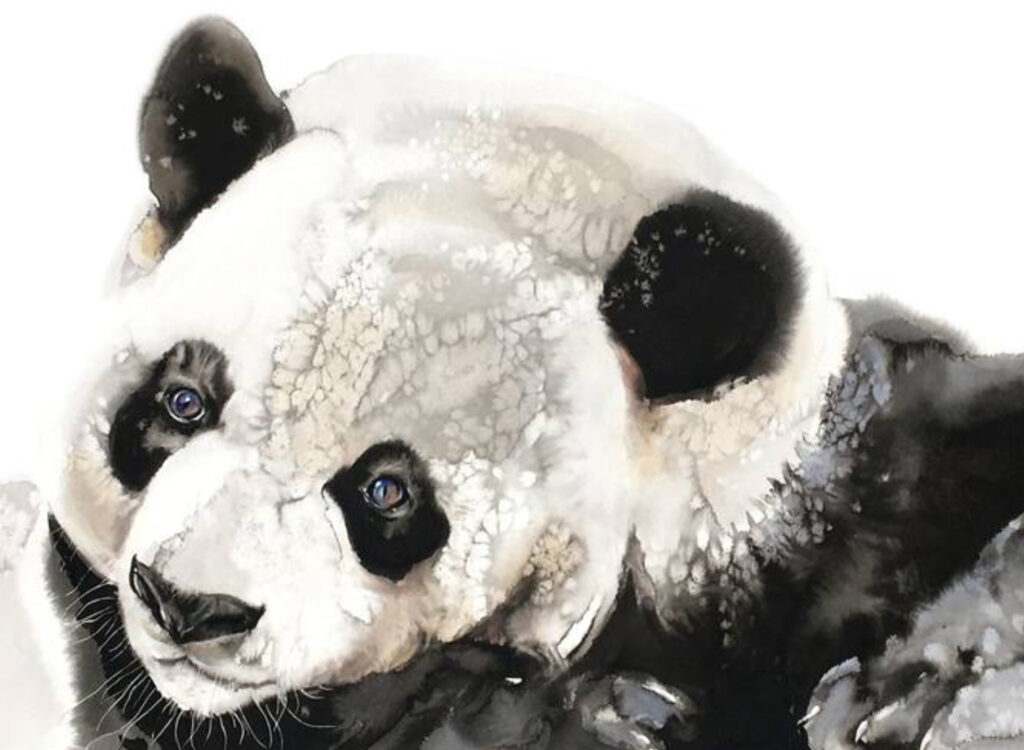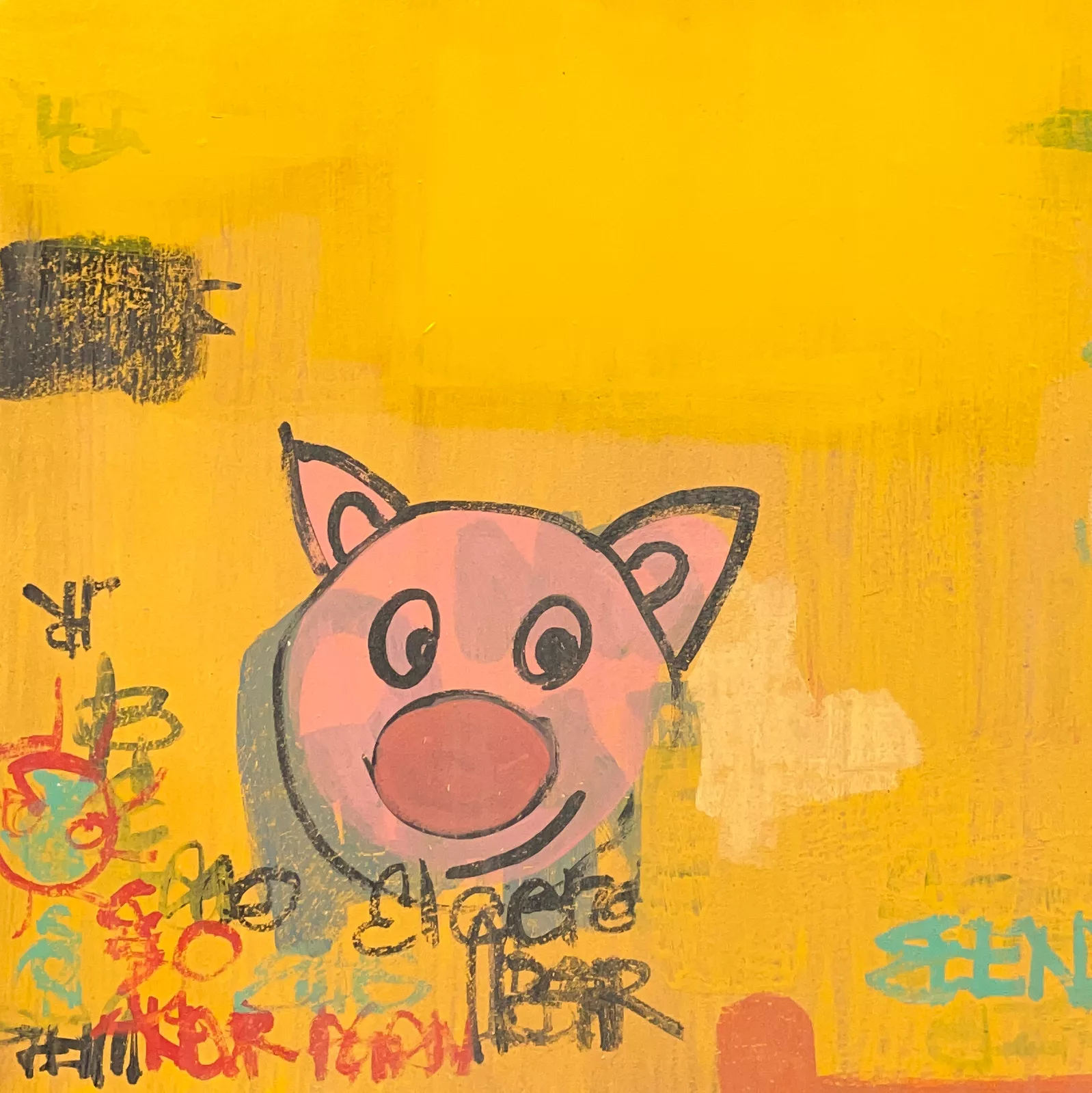Soo Beng Lim’s Panda Musing offers more than just an artistic depiction of one of nature’s most beloved animals; it serves as a meditative piece that invites viewers to pause, reflect, and connect with life’s simple joys. Known for his mastery of traditional Chinese ink techniques and his ability to capture the spirit of his subjects, Lim uses this artwork to highlight the panda’s iconic serenity, making it a timeless ode to mindfulness and harmony.
The Art of Soo Beng Lim
Soo Beng Lim is renowned for his distinct style that merges traditional Chinese brush painting with contemporary aesthetics. His works often feature animals, particularly those embodying peace, grace, and resilience, making the panda a fitting subject. Lim’s brushwork is fluid and intuitive, yet every stroke feels purposeful, capturing the essence of his subjects with remarkable precision.
In Panda Musing, Lim employs a minimalist approach, characteristic of Chinese ink painting. The sparse yet deliberate brushstrokes allow the panda’s form and expression to emerge naturally, creating a sense of spontaneity that mirrors the relaxed demeanor of the animal. The white space surrounding the panda is not empty but alive, amplifying the sense of tranquility that radiates from the central figure.
The Panda as a Symbol
The panda has long been a symbol of peace and harmony, particularly in Chinese culture. Often associated with the yin-yang philosophy, the panda’s black-and-white fur represents balance and duality. In Panda Musing, Lim amplifies this symbolism by portraying the panda in a moment of quiet introspection, encouraging viewers to seek balance within themselves.
The panda’s calm posture—sitting with its head slightly tilted, as if lost in thought—invites us to contemplate our relationship with nature and with our inner world. The artwork subtly reminds us of the importance of slowing down in a fast-paced world, taking time to appreciate the beauty in stillness.
Technique and Composition
Lim’s use of Chinese ink painting techniques is particularly striking in Panda Musing. The medium itself is unforgiving, as each brushstroke is permanent, requiring an extraordinary level of skill and confidence. Lim’s mastery is evident in the way he captures the panda’s soft, rounded form with just a few strokes, conveying both its physicality and spirit.
The composition is equally thoughtful. The panda is positioned slightly off-center, drawing the viewer’s eye across the piece and creating a sense of movement within stillness. The simplicity of the black-and-white palette mirrors the panda’s natural coloration, emphasizing the harmonious balance between light and shadow. The subtle textures in the brushwork give the fur a tactile quality, while the panda’s eyes, rendered with delicate precision, are the focal point of the piece, exuding warmth and introspection.
Emotional Resonance
One of the most remarkable aspects of Panda Musing is its ability to evoke a profound emotional response. The artwork captures not only the panda’s external form but also its inner tranquility, creating a connection between the viewer and the subject. There’s an almost meditative quality to the piece, as if the panda’s calmness is contagious, encouraging the viewer to adopt a similar state of mind.
This emotional resonance is further enhanced by the universal appeal of the panda. As a global symbol of conservation and a reminder of the fragile beauty of our natural world, the panda holds a special place in the hearts of people across cultures. Lim’s portrayal of the panda in a contemplative moment deepens this connection, transforming the artwork into a meditation on life itself.
The Role of Negative Space
In traditional Chinese painting, negative space is as important as the painted elements. In Panda Musing, the empty areas around the panda are not merely blank but are imbued with meaning. They create a sense of openness and possibility, allowing the viewer’s imagination to roam freely. The negative space also serves to isolate the panda, emphasizing its introspective mood and inviting the viewer to share in its solitude.
The use of negative space in this piece aligns with the principles of Taoism, which emphasize the value of emptiness and the interconnectedness of all things. By leaving parts of the canvas untouched, Lim allows the viewer to engage actively with the artwork, filling the void with their own thoughts and interpretations.
Cultural and Environmental Context
Beyond its aesthetic and emotional qualities, Panda Musing carries a deeper cultural and environmental message. The panda is a symbol of China’s rich heritage and its ongoing commitment to wildlife conservation. As an endangered species, the panda’s survival depends on efforts to protect its natural habitat and address the broader challenges of environmental degradation.
Lim’s choice to depict the panda in a moment of peace and contemplation can be seen as a call to action, urging humanity to reflect on its relationship with the natural world. The simplicity of the artwork belies its powerful message: that in protecting creatures like the panda, we are also preserving the delicate balance of our planet.
The Universal Appeal of Panda Musing
While deeply rooted in Chinese artistic traditions, Panda Musing transcends cultural boundaries. Its minimalist aesthetic and universal themes of peace, balance, and mindfulness resonate with audiences worldwide. The panda’s endearing expression and relaxed posture make the artwork approachable, while the sophistication of Lim’s technique ensures its lasting impression.
The artwork’s appeal lies in its ability to communicate complex ideas through simplicity. It invites viewers to pause, reflect, and find solace in the present moment, offering a sense of comfort and connection in an increasingly chaotic world.
Soo Beng Lim’s Panda Musing is more than just a depiction of a panda; it is a meditation on life, balance, and the beauty of simplicity. Through masterful brushwork, thoughtful composition, and a deep understanding of his subject, Lim has created a piece that resonates on multiple levels, from the personal to the universal.
The artwork serves as a reminder of the importance of mindfulness and the need to reconnect with nature. In a world that often feels overwhelming, Panda Musing offers a moment of calm—a chance to breathe, reflect, and find harmony within ourselves and with the world around us. It is a timeless piece that continues to inspire and uplift, embodying the enduring power of art to touch the soul.
No comments yet.








